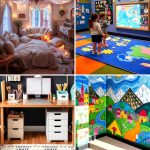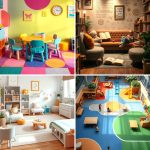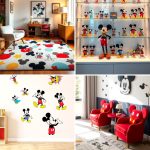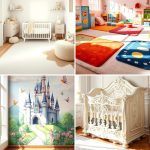In a cozy, shared space brimming with opportunities for creativity and organization, designing a small room that accommodates both a boy and a girl can transform everyday challenges into delightful adventures. This exploration into 22 innovative ideas brings together functionality with style, ensuring that each corner fosters individuality while harmonizing into a unified space. Whether you’re revamping a long-standing design or starting from scratch, these ideas offer practical and inspiring ways to create a balanced haven that caters to diverse tastes. Embark on this journey and discover 22 Boy and Girl Shared Small Room Ideas.
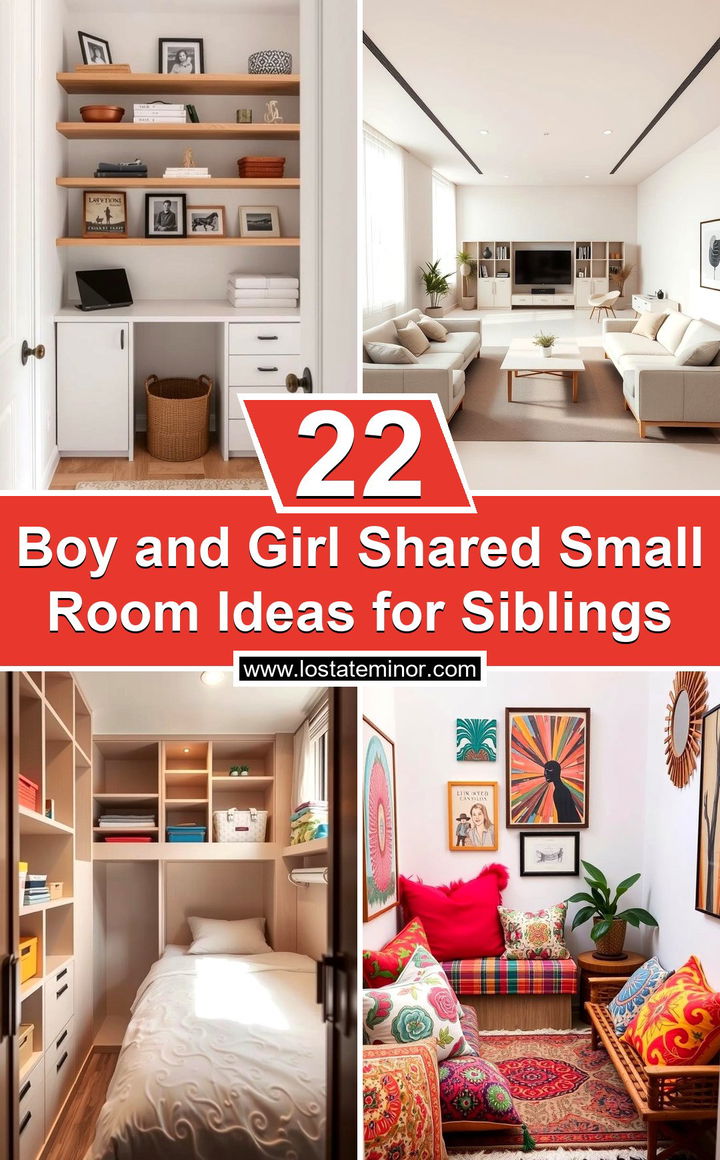
1. Dual-Zone Design
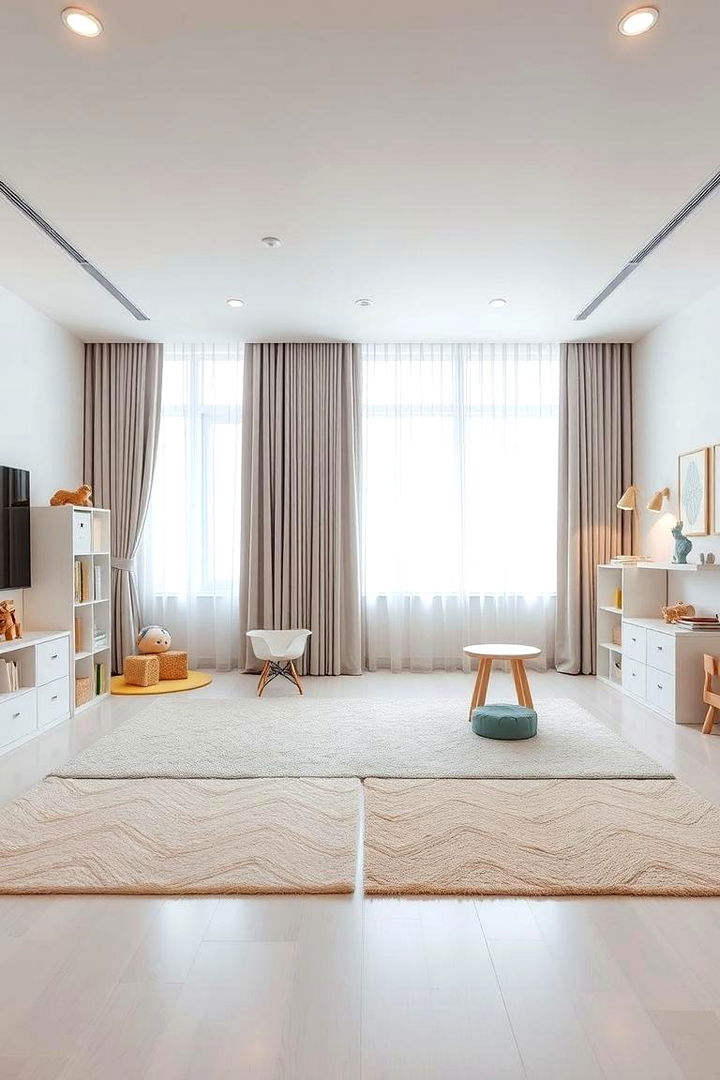
A thoughtful dual-zone design can seamlessly separate personal spaces within one small room while maintaining an overall cohesive feel. By using clear delineations such as rugs, curtains, or furniture placement, children can enjoy tailored areas for study, sleep, or play. This approach encourages responsibility and personal space without compromising on shared experiences. The design offers dual benefits: it sparks creativity and provides a sense of independence for both the boy and the girl, making every square inch count without cluttering the room.
2. Built-in Storage Solutions
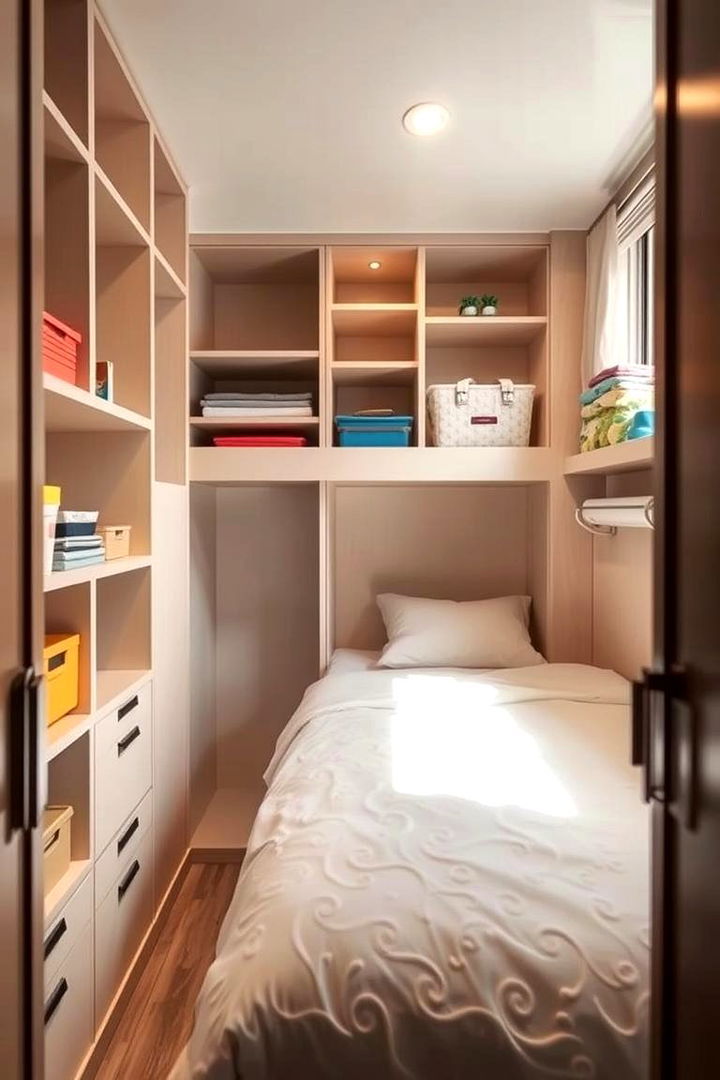
Bringing built-in storage solutions into a shared room elevates both practicality and style. Incorporating shelves, drawers, and under-bed storage optimizes space and prevents clutter from hindering the room’s functionality. This smart approach ensures each child has a dedicated area for their belongings, inspiring organization and reducing daily chaos. Carefully curated storage units can double as decor elements while offering ample room for toys, books, or personal treasures, ensuring the space remains serene and well-organized for both personalities.
3. Color-Coded Spaces
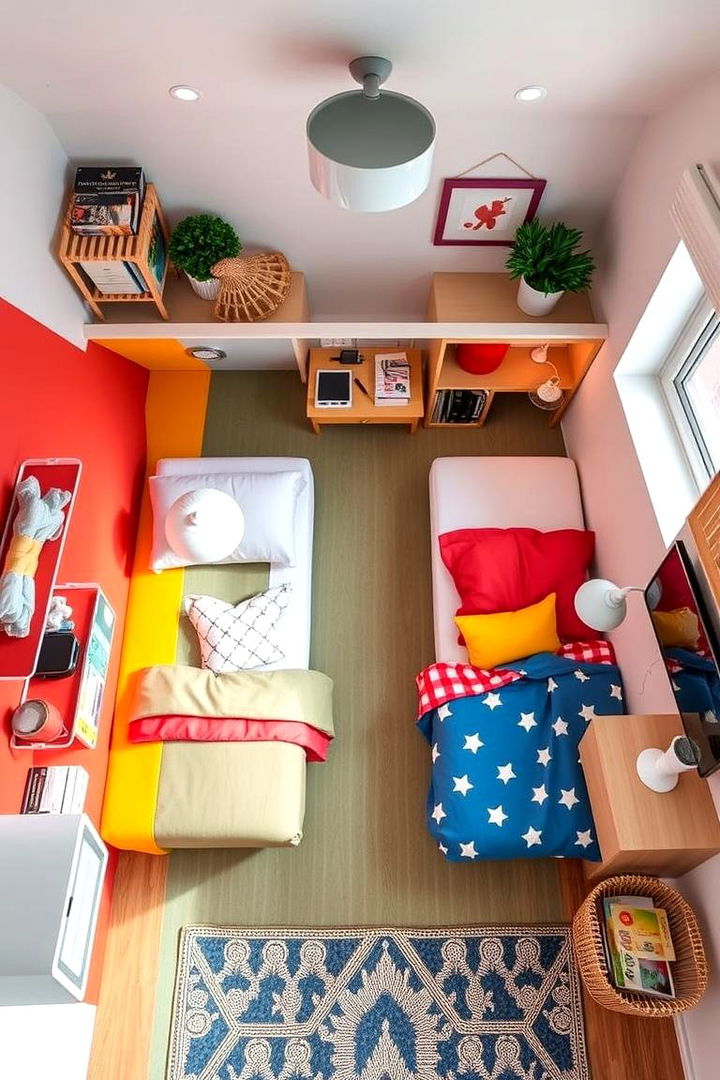
Consider dedicating color-coded spaces to highlight each child’s personality while uniting the room’s overall theme. Assigning a signature color for the boy and another for the girl can serve as visual cues for their respective areas within the shared room. This creative method not only assists in personalizing their environments but also makes it easier to organize belongings and create a sense of ownership. By selecting harmonious yet contrasting hues, the room becomes a vibrant blend of individuality and shared identity that sparks joy and encourages self-expression.
4. Customizable Wall Decals
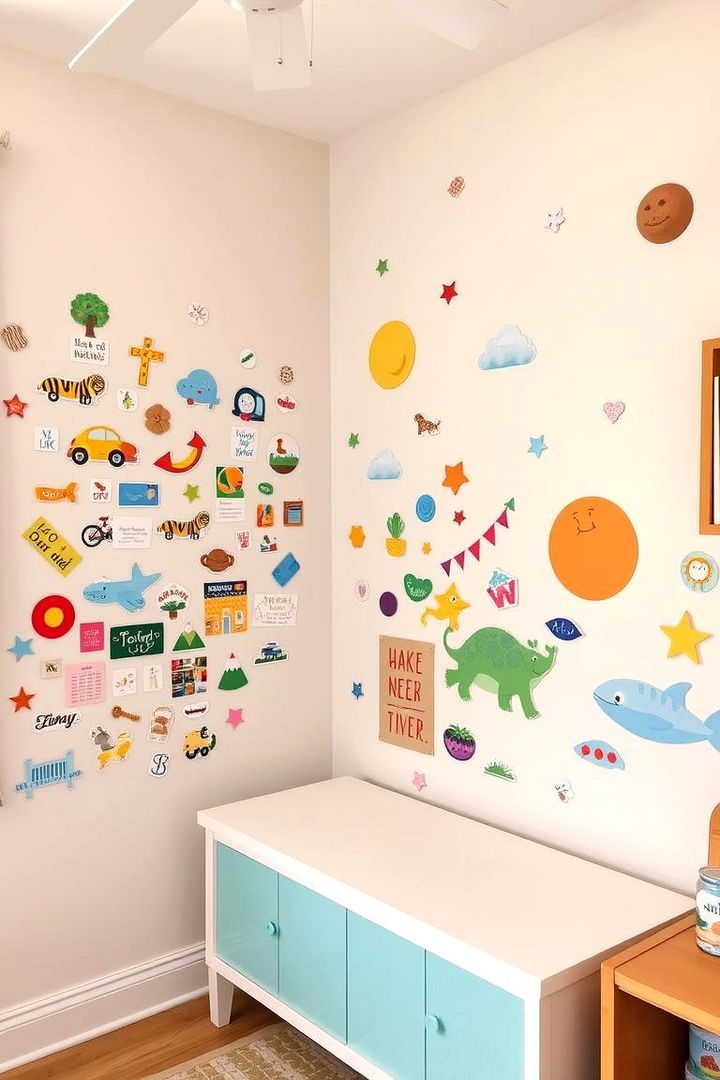
What if walls could speak volumes about each child’s taste? Customizable wall decals offer an effortless way to express creativity without permanent alterations. With removable stickers or murals tailored to each personality, the shared room evolves as children grow and change interests. This solution is both cost-effective and flexible, enabling updates that reflect new hobbies or seasonal themes. The ease of application and removal ensures the décor stays fresh and inspiring, providing a visually stimulating backdrop that complements both individual flair and a unified aesthetic.
5. Multifunctional Furniture
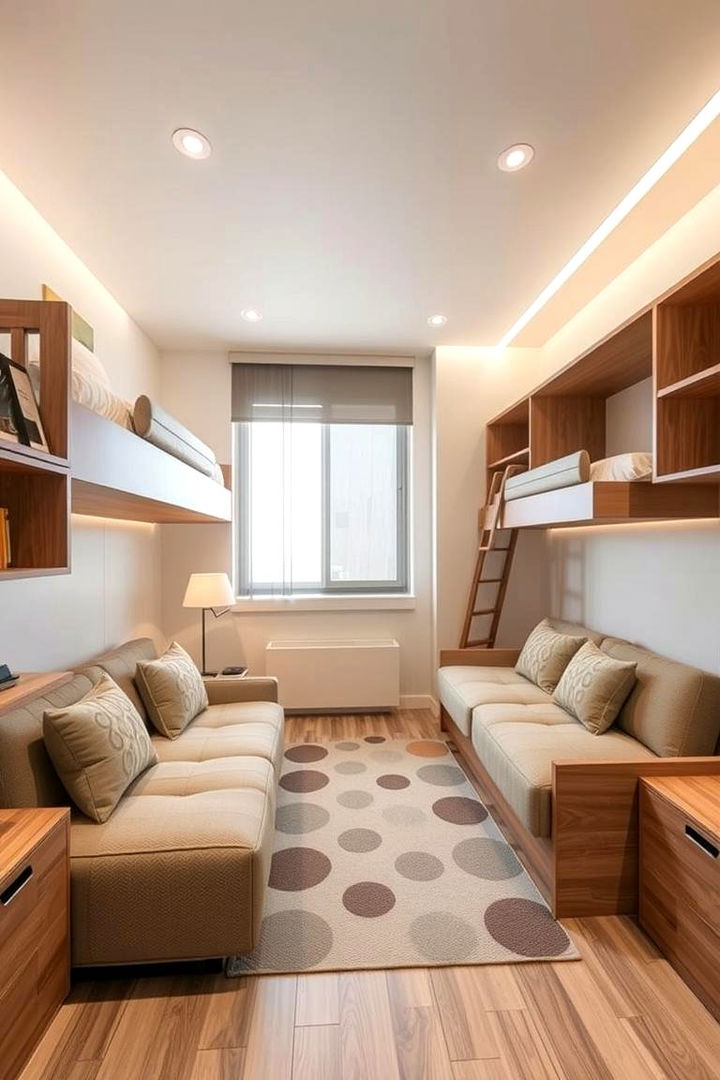
By integrating multifunctional furniture, a small room can transform into a dynamic space that meets the needs of both a boy and a girl without compromise. Look for pieces such as loft beds with study areas, tables with built-in storage, and collapsible seating to maximize every inch. Such designs create a balance between practical requirements and style, enabling the room to adapt to play, homework, or rest. Multifunctional furniture not only saves space but also offers versatility, ensuring that the room remains organized, efficient, and inviting to both children throughout their growing years.
6. Creative Room Dividers
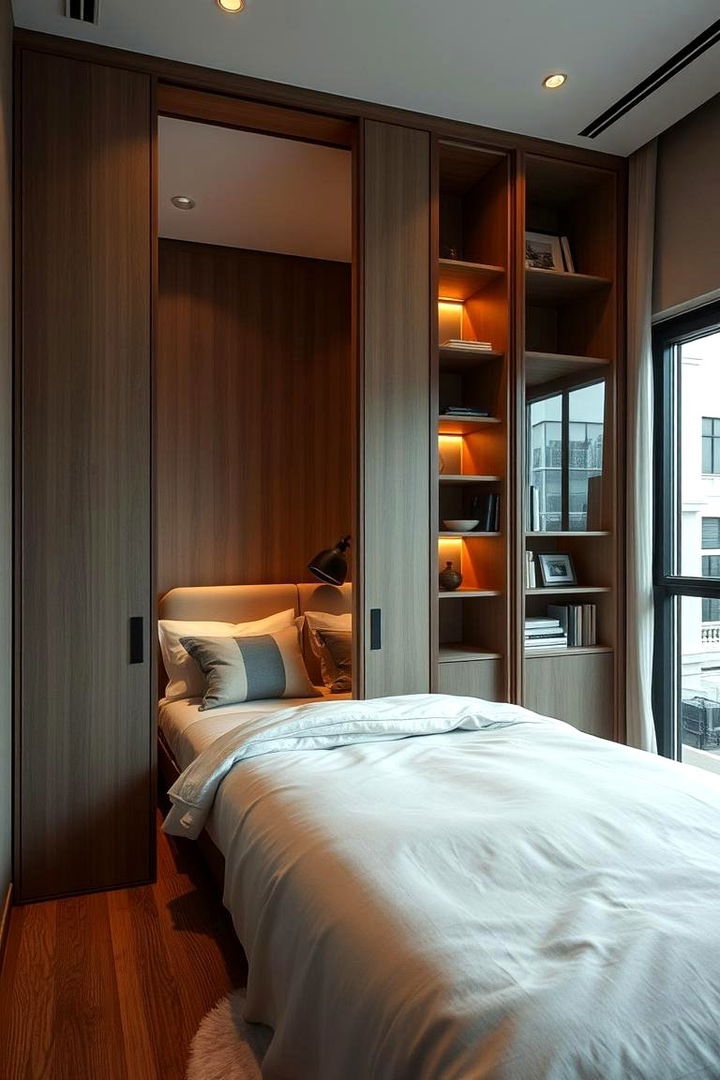
To address the challenge of shared space, creative room dividers offer an imaginative solution that provides both privacy and unity. Using elements like sliding panels, curtains, or bookcases, you can delineate distinct study or play areas. These partitions are a practical way to manage the varying needs of a boy and a girl without sacrificing the overall openness of the room. With numerous styles and materials available, room dividers can be a focal design element that enhances aesthetics while ensuring that each child can enjoy moments of solitude when needed.
7. Shared Study Nook
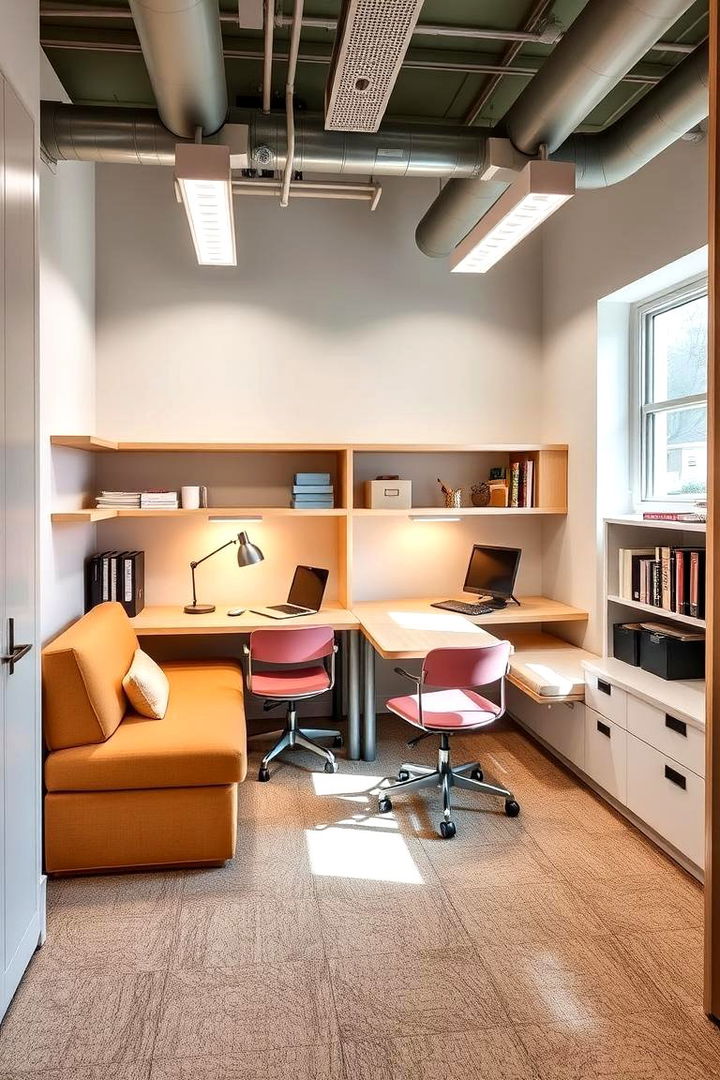
For families focused on balancing leisure and learning, a shared study nook can be a game-changer in a small room setting. Designing a collaborative work area that includes a shared desk, comfortable seating, and adequate lighting encourages academic focus while fostering a sense of teamwork. This designated zone promotes shared projects and mutual support, blending functionality with a spirit of cooperation. Integrating storage for school supplies and a cork or whiteboard can further enhance the learning environment, creating a space that nurtures creativity and academic growth for both the boy and the girl.
8. Cozy Reading Corners
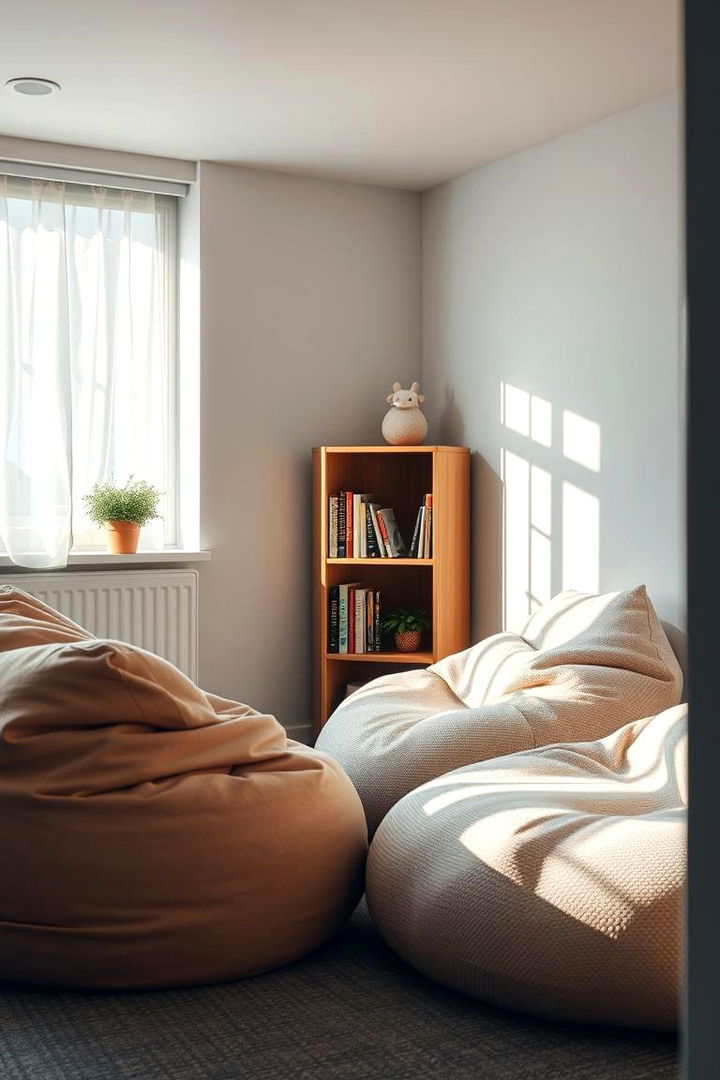
By establishing a cozy reading corner, you create an inviting retreat where both children can embark on adventures within the pages of their favorite books. Soft lighting, comfortable bean bags or a small couch, and a well-stocked bookshelf set the stage for a calming atmosphere that encourages quiet time. This thoughtful arrangement not only nurtures a love for reading but also provides a peaceful escape from the daily hustle. The harmonious blend of color and texture makes it a perfect shared haven where personal fantasies and collective calm seamlessly coexist.
9. Light and Bright Layout
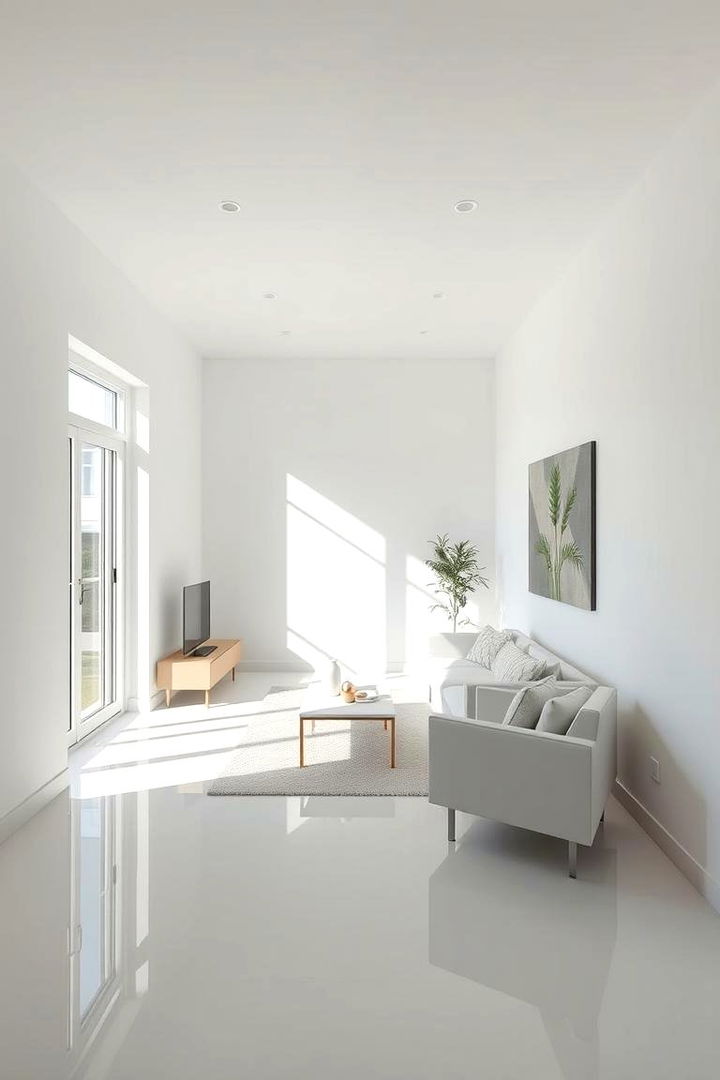
To inspire a sense of expansiveness in a confined space, a light and bright layout is essential. Integrating ample natural light, light-colored walls, and reflective surfaces can transform a small room into an airy, energizing environment. Emphasize simplicity with minimal, modern furnishings and strategic lighting to keep the space vibrant throughout the day. This design approach benefits both children by creating a mood that enhances concentration and cheerfulness, making the room not only visually appealing but also conducive to both play and study in a balanced, dynamic atmosphere.
10. DIY Decor Projects
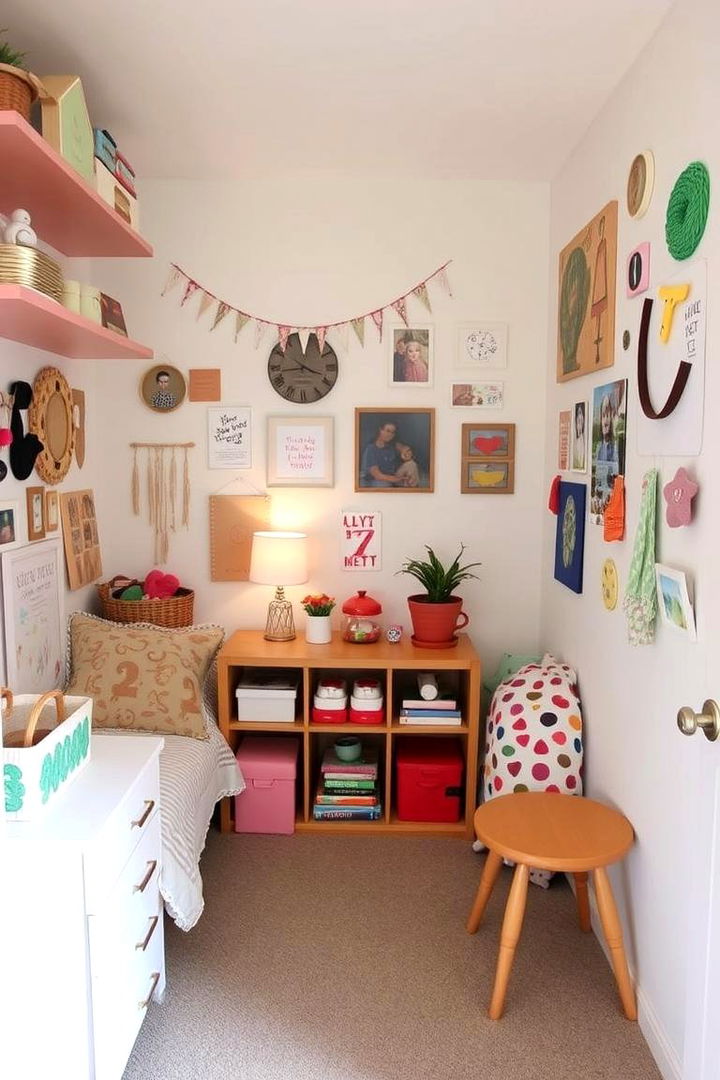
Another engaging idea is to incorporate DIY decor projects that allow both children to actively participate in the room’s design. Involving them in crafting personal artworks, custom photo frames, or painted wall accents fosters a sense of ownership and creativity. This interactive process encourages collaboration and self-expression, as each child adds their unique touch to the shared space. DIY projects not only create cost-effective, personalized decor but also serve as lasting memories of creative collaboration. The simple act of making art together promotes family bonding and highlights the room’s distinctive charm.
11. Personalized Themes
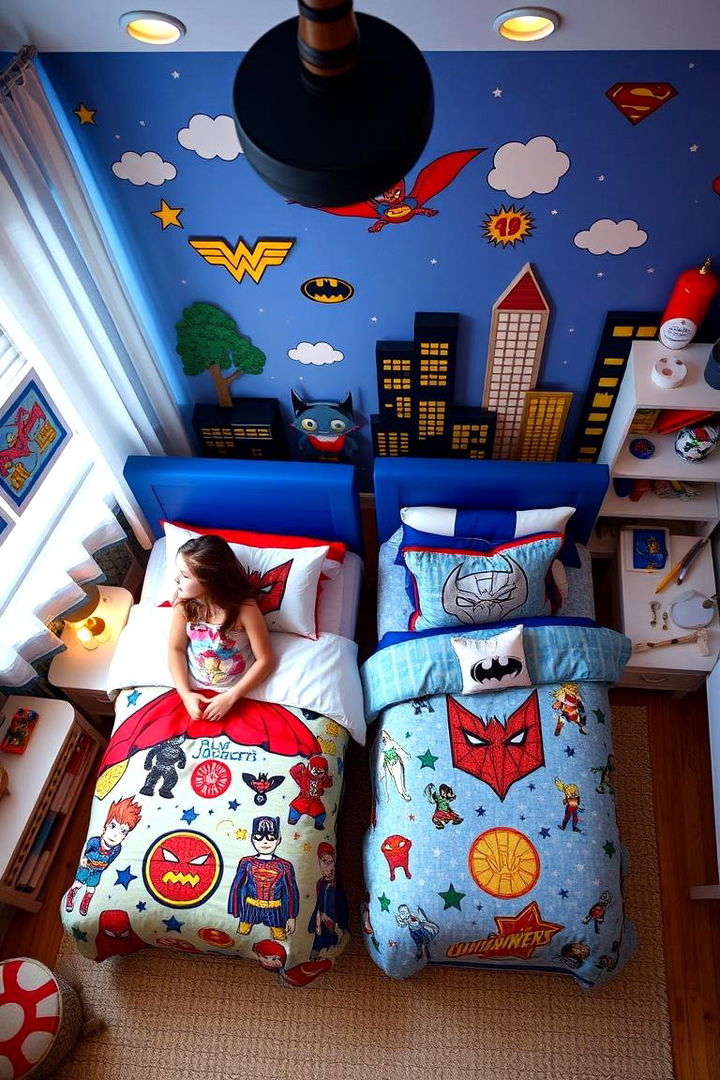
Taking a personalized approach to the room’s theme can spark both imagination and practical organization. Imagine a space where each child’s interests—be it superheroes, sports, fairytales, or nature—are seamlessly woven into the décor while maintaining an overall balanced ambiance. This creative strategy involves custom bedding, themed accessories, and coordinated colors that reflect each personality. Not only does this design affirm individuality, but it also fosters shared experiences as children appreciate the unique blend of creative elements. This method reinforces the room’s ability to grow alongside its young inhabitants.
12. Magnetic Wall Boards
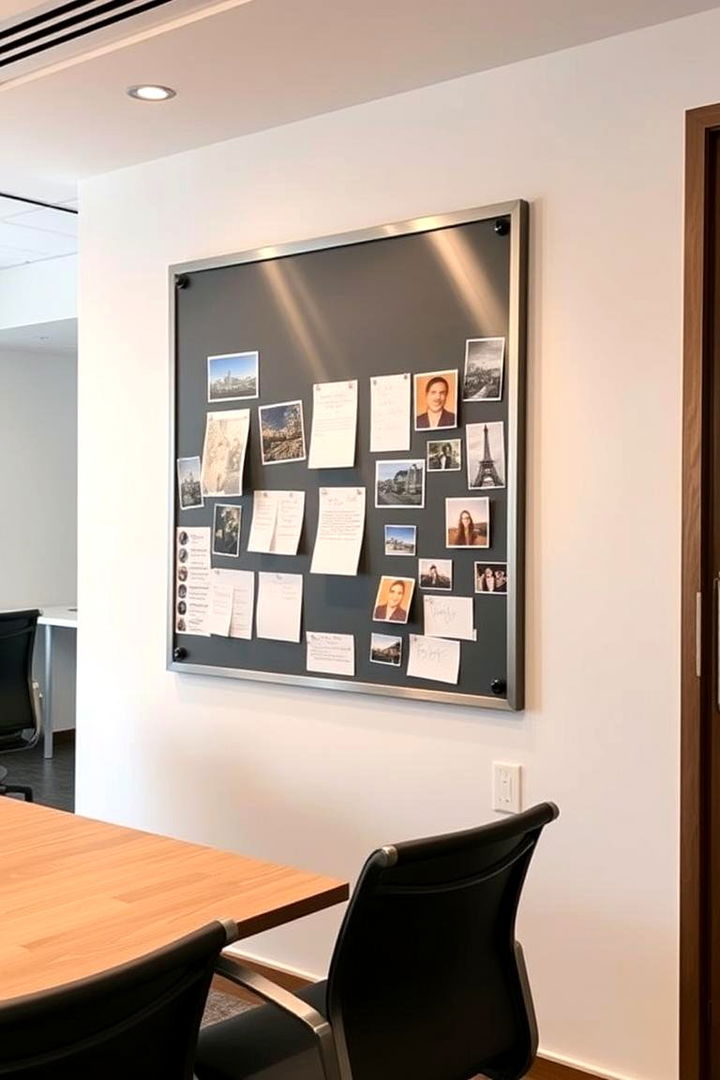
To simplify organization while adding a playful element, magnetic wall boards offer an excellent solution in a shared small room. Installing a magnetic board on one wall provides a versatile space for notes, pictures, school schedules, or even inspiring quotes. This feature keeps essential items visibly organized and encourages both children to engage in planning and decor updates. The board’s sleek design can harmonize with various interior styles, ensuring that it complements both a boy’s dynamic energy and a girl’s delicate tastes. The concept promotes functional creativity while maintaining a clutter-free environment.
13. Flexible Bedding Arrangements
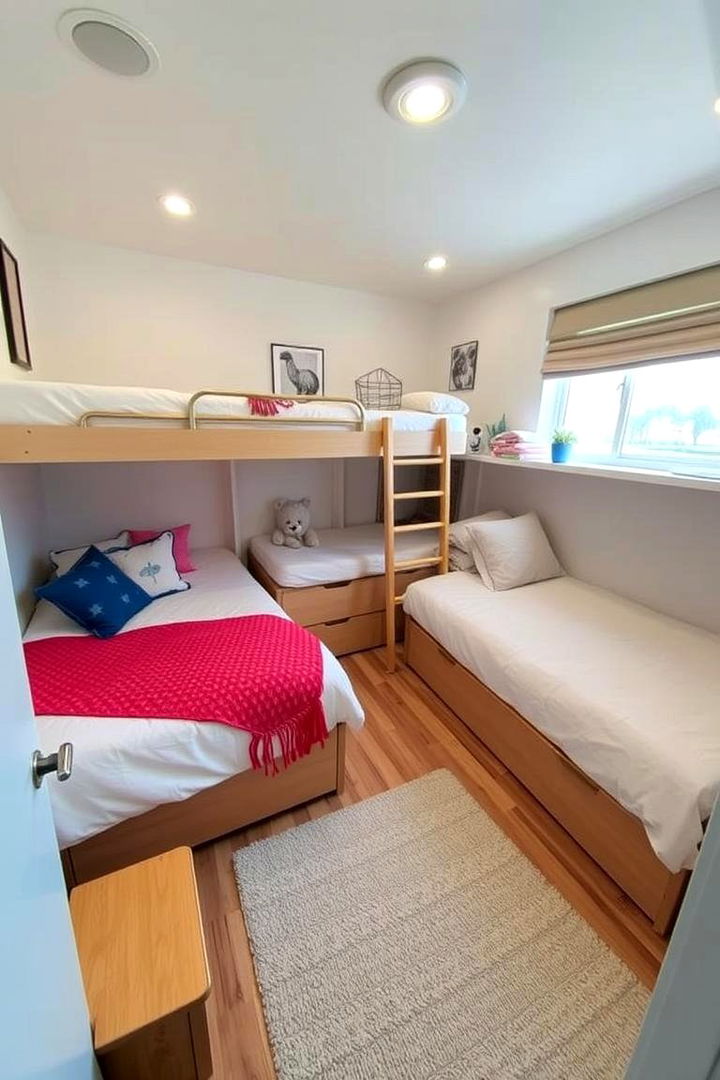
Flexible bedding arrangements transform the sleep space into a versatile area that adapts to each child’s evolving needs. Consider using trundle beds, bunk beds with individualized decor, or convertible sofas that serve dual purposes in a small room. This adaptability not only saves space but also makes it easier to incorporate personal styles into the shared sleep zone. By offering alternative sleeping setups, the design makes transitions smooth whether it’s for quiet reading time or a quick change before play. This flexible concept nurtures comfort, privacy, and creativity, ensuring a restful and engaging environment for both occupants.
14. Floating Shelves for Personal Treasures
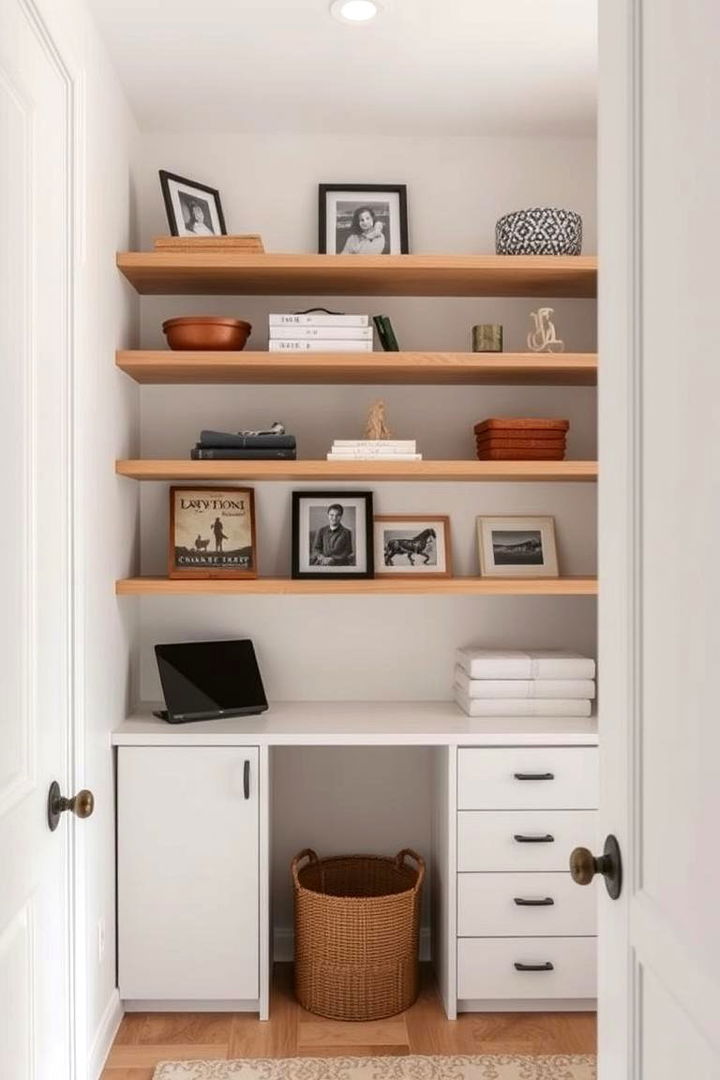
Floating shelves offer a modern and elegant solution for displaying personal treasures without consuming valuable floor space. Installing these shelves along a shared wall allows each child to curate their favorite books, toys, or artwork while keeping the area uncluttered. The sleek, wall-mounted design elevates the room’s aesthetic and permits creative expression, reflecting each child’s personality in a beautifully organized display. Their minimalistic approach not only frees up space but also teaches both the boy and the girl the value of personalization and neatness, blending function with Wall-worthy charm.
15. Art Display Areas
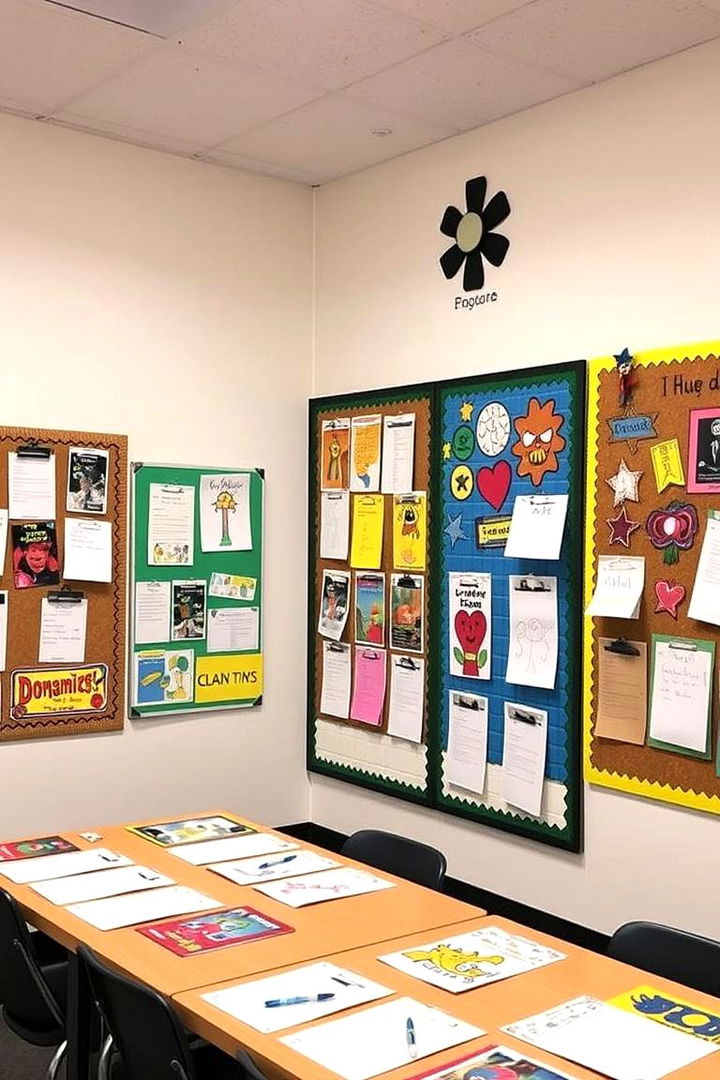
Looking to inspire creativity, dedicated art display areas can transform a small room into a gallery of personal expression. Use clipboards, cork boards, or hanging wires to showcase drawings, paintings, and crafts, giving children a sense of pride in their work. This practice encourages continual creativity and provides an evolving exhibition that reflects personal interests over time. The display also doubles as decor, lending the room a vibrant, dynamic character that can evolve with the children’s artistic journey. It’s both an inspirational focal point and a practical method for keeping cherished pieces visible and organized.
16. Eco-Friendly Decor
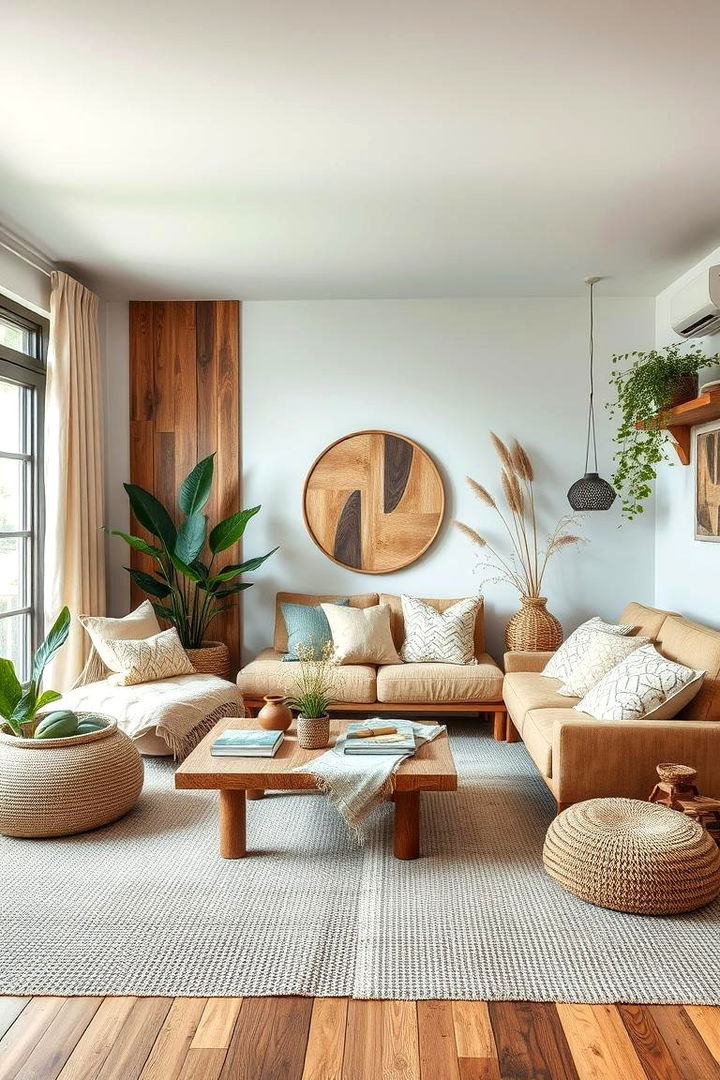
With rising environmental awareness, eco-friendly decor can make a significant impact in a shared children’s room. Using sustainable materials like reclaimed wood, organic fabrics, and non-toxic paints promotes a healthy living space while teaching valuable lessons about nature and recycling. This environmentally conscious approach also introduces natural textures and earthy tones that blend well with vibrant accents. Both children can benefit from a room that not only looks refreshed and modern but also reflects a commitment to the environment, creating an inspiring space that balances aesthetics with eco-conscious values.
17. Smart Lighting Solutions
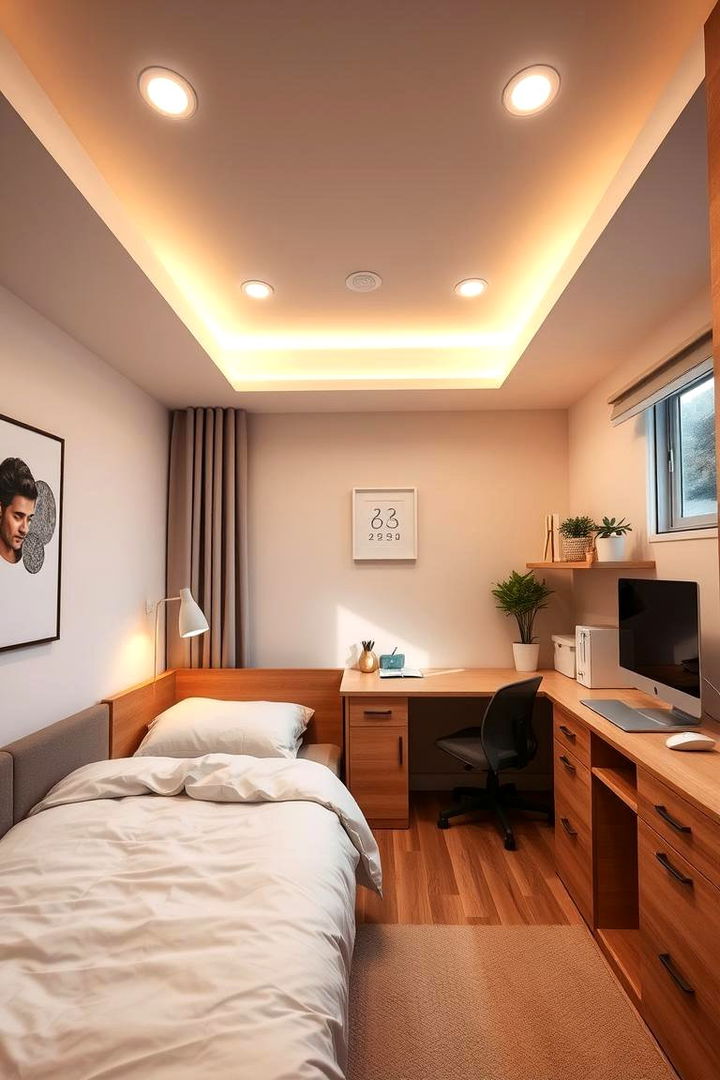
Surprisingly, integrating smart lighting solutions can elevate the functionality of any small shared room. Installing adjustable LED lights, nightlights, and automatic dimmers allows each child to customize their area for studying, playing, or sleeping. The adaptability of smart lighting creates a comfortable, energy-efficient atmosphere conducive to various activities. Thoughtful placement and color temperature adjustments ensure that the room remains a vibrant and balanced environment. Whether it’s for homework sessions or calming evenings, smart lighting infuses the space with modern efficiency and creative control.
18. Integrated Tech Corner
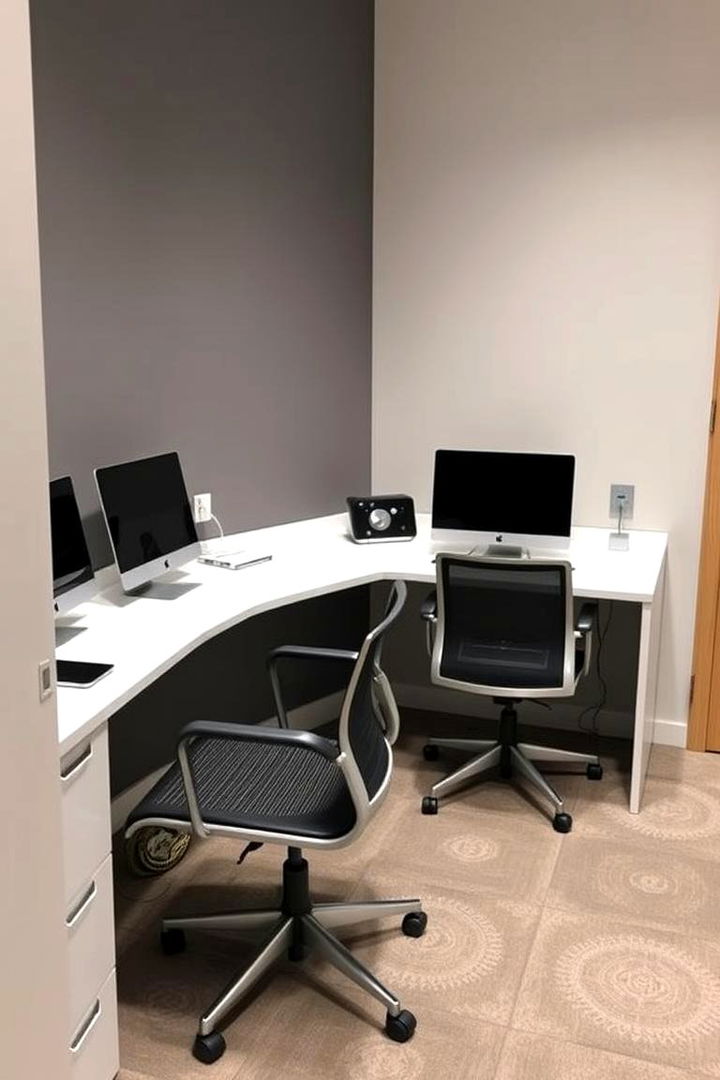
By setting up an integrated tech corner, you introduce a modern element that caters to learning and entertainment alike. This designated space features compact desks equipped with smart devices, charging stations, and cable management systems that keep the area neat. The tech corner not only supports digital studies and interactive learning but also provides both children a modern sanctuary to explore educational apps and creative projects. It highlights the importance of technology in today’s world while ensuring that the shared room remains organized and visually pleasing. This balanced inclusion enhances functionality without overshadowing personal spaces.
19. Sustainable Materials Use
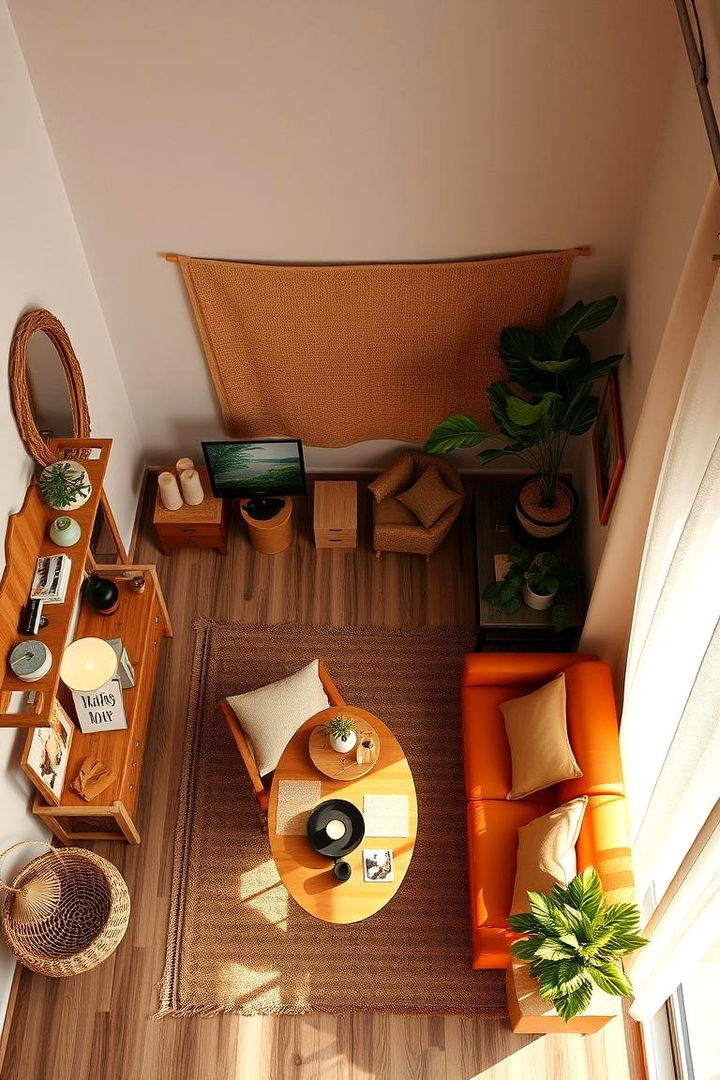
Taking advantage of sustainable materials in room design combines environmental responsibility with lasting style. Utilizing eco-friendly furniture, natural fibers for textiles, and energy-efficient fixtures creates a sustainable, health-conscious haven. This thoughtful choice not only contributes to a greener planet but also reinforces the values of responsibility and care among young inhabitants. Both the boy and the girl can thrive in an environment that is both safe and forward-thinking, where every design element is carefully chosen to harmonize beauty with practicality. This approach turns limitations into sustainable strengths.
20. Minimalistic Approach
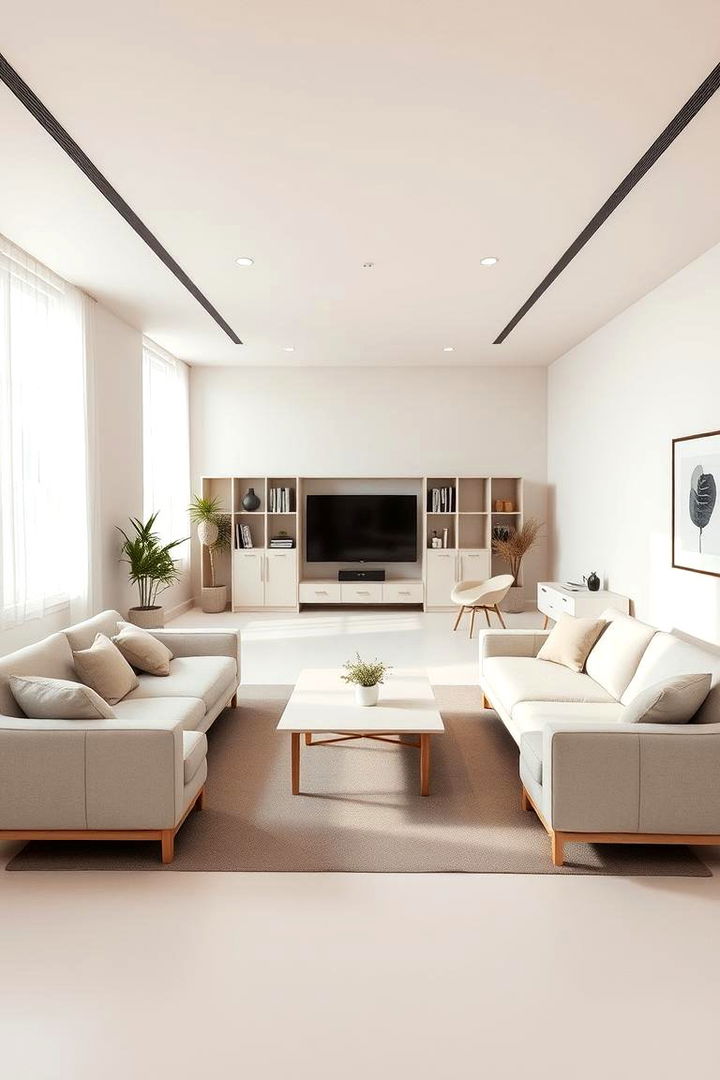
Taking a minimalistic approach can be especially beneficial in a shared small room, ensuring that every item serves a clear purpose. With a focus on essential furniture, neutral colors, and organized layouts, this design minimizes clutter while maximizing space. The sparing use of decorative elements creates a serene environment that appeals to both a boy’s energetic side and a girl’s delicate taste. This simplicity not only makes cleaning and organizing easier but also encourages mindfulness in daily routines. The minimalistic design transforms a small room into an uncluttered, versatile space adaptable to various needs and moods.
21. Vibrant Accent Pieces
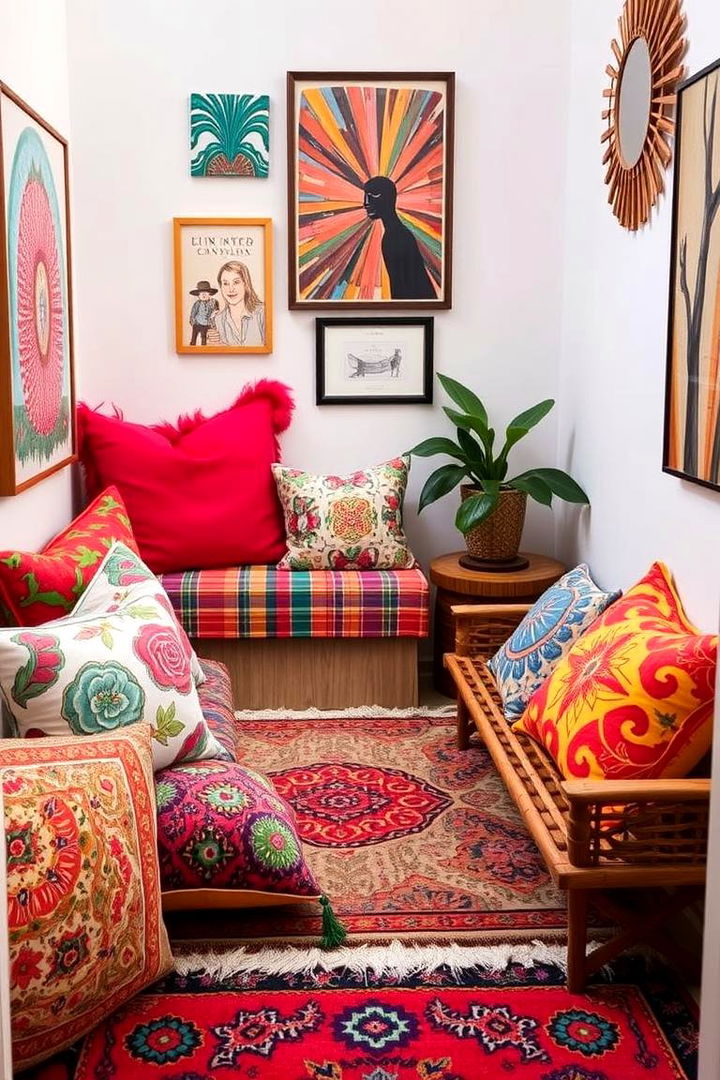
Unlike traditional decor, incorporating vibrant accent pieces offers a burst of personality and energy in a shared small room. These dynamic elements, such as colorful throw pillows, artistic rugs, or eye-catching wall art, serve as focal points that capture the essence of both children’s tastes. The contrasting hues and patterns guide the eye and create a lively atmosphere that enlivens otherwise simple furnishings. Vibrant accents inject warmth and character into the space, encouraging creativity and playfulness while maintaining a balanced, inviting environment suitable for both the boy and the girl.
22. Creative DIY Organization
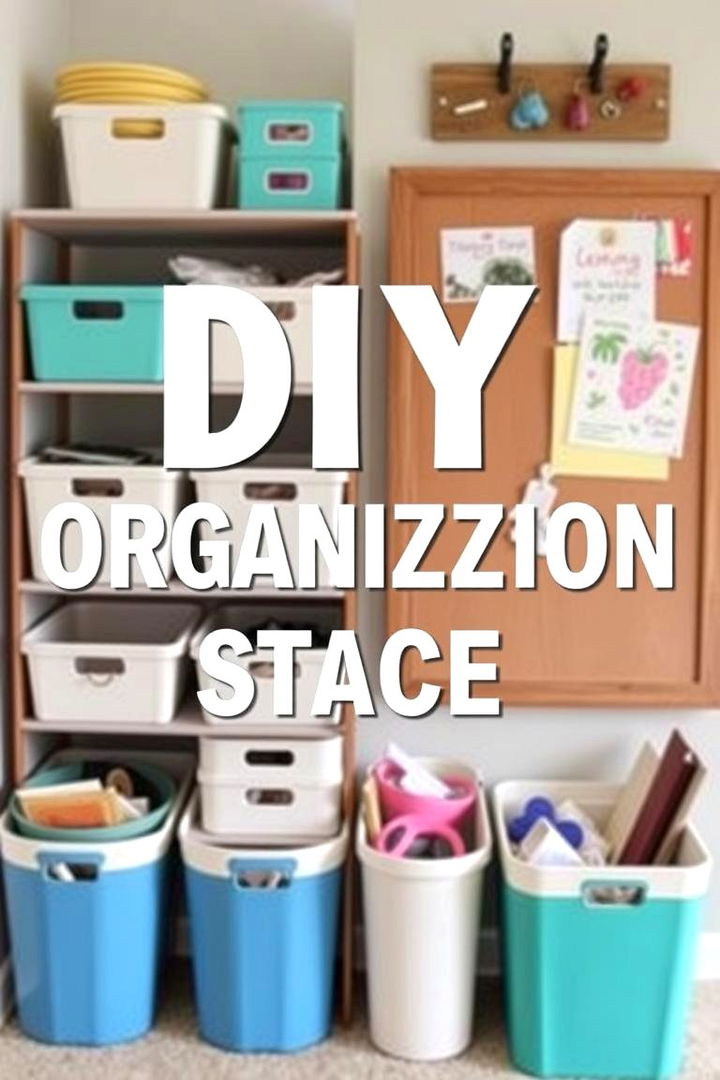
To wrap things up, creative DIY organization projects can transform everyday storage into works of art and functionality. Encouraging the children to design custom organizers, such as painted bins, personalized bulletin boards, or repurposed furniture pieces, not only enhances the room’s organization but also stimulates their creative problem-solving skills. This hands-on approach makes tidying up a fun activity and turns compliance into an exciting part of room management. DIY organization projects offer unique, personal solutions that help each child feel involved in creating a space that is both orderly and reflective of their individual style.
Conclusion:
Bringing together a blend of modern design and personal touches, these 22 ideas for a boy and girl shared small room ensure that every inch is utilized thoughtfully. By integrating smart furniture, creative decor, and sustainable practices, the space becomes an inspiring haven for both children to study, play, and grow. The diverse suggestions emphasize dual functionality and a balance between shared and personal areas, making organization and style effortless. Each idea builds a foundation for a room that reflects love, creativity, and practicality in equal measure, inviting you to embrace these 22 Boy and Girl Shared Small Room Ideas.


